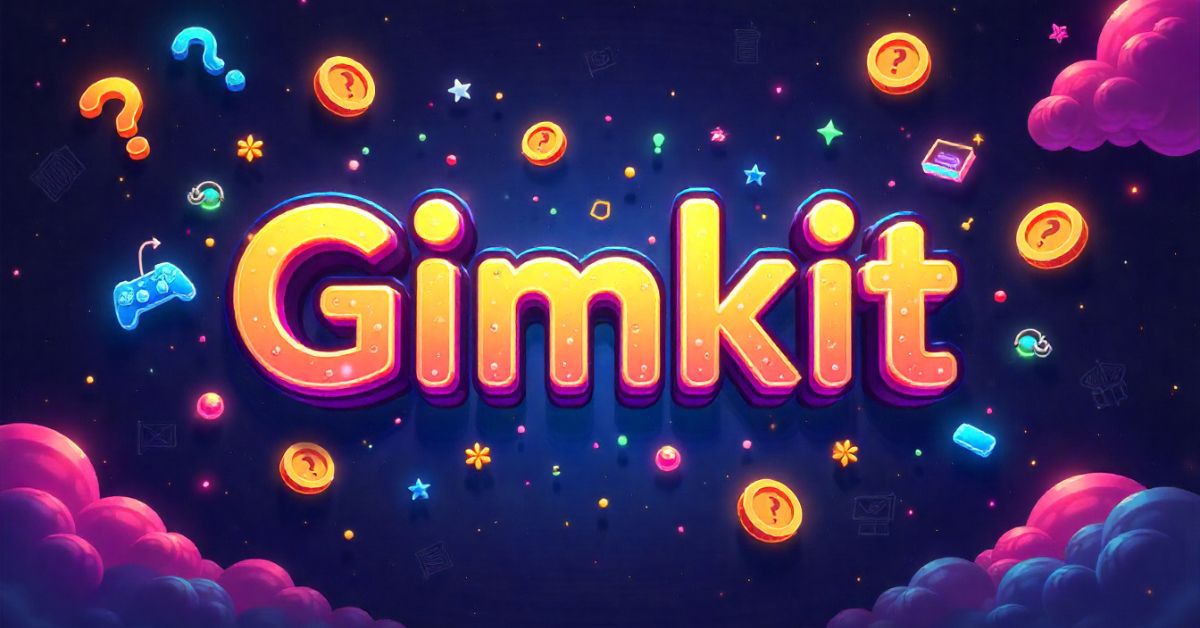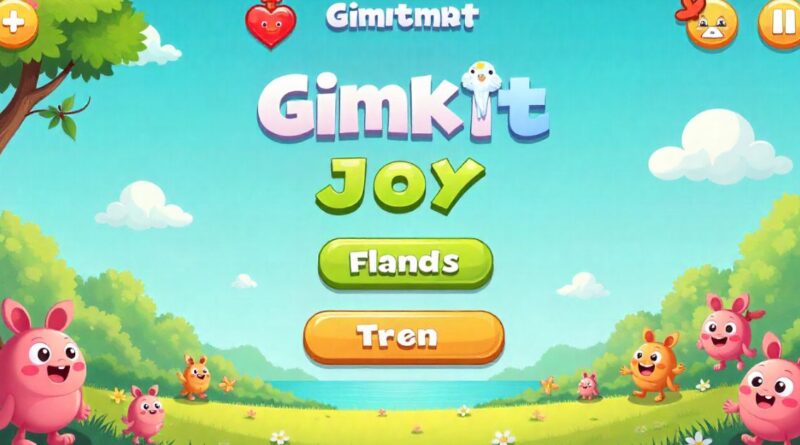Gimkit Transforms Learning Through Game-Based Strategy
Introduction
In an age of apps, algorithms, and instant access, learning is being reimagined. The classroom is no longer defined by four walls but by the quality of digital experiences a student engages with. Yet the core challenge has remained the same: how to motivate learners—especially in a generation fueled by notifications, leaderboards, and social video algorithms.
Today’s students aren’t just users of technology; they’re strategists and players in expansive virtual ecosystems. They’re accustomed to immediate feedback, dynamic missions, and player-driven narratives. Asking them to quietly complete linear worksheets creates a cultural disconnect.
Enter game-based learning—an evolving digital learning category designed to activate the same neurological reward systems found in strategy games and competitive online platforms. Among these platforms is Gimkit, a tool known for deeply integrating point systems, power-ups, and player decision-making into everyday learning.
But this isn’t just about making quizzes flashy. It’s about reshaping how learners interact, reflect, apply, and grow academically using systems that naturally resonate with how they already think. Let’s explore the mechanics, psychology, and future of game-based learning—and why smart classrooms in 2025 aren’t just educating students… they’re letting them play their way to mastery.
The Psychology Behind Game-Based Learning
Why Modern Learners Prefer Play Over Passive Lessons
Today’s learner is immersed in digital interactivity. From touchscreens to avatars, from mobile games to short-form video, they’re trained by design to respond to systems that offer feedback quickly and dynamically. Traditional teaching methods—lectures, readings, and recall-based assessments—are simply not designed to activate the brain’s core reward systems.
Game-based learning triggers:
- Dopamine-driven feedback loops
- Short-term goal setting (missions, levels)
- Progress visualization
- Safe failure environments that encourage retrying rather than penalizing
When these features are built into educational platforms, learners naturally show greater time-on-task, persistence, and mastery.
A 2025 meta-study from the International Journal of Educational Technology found students using structured educational games demonstrated 43% improvement in long-term retention compared to peers using non-interactive digital tools.
Strategy Over Speed: Building Smarter Learning Paths

Moving Beyond Timed Trivia
Traditional quiz games often reward speed—get the correct answer first, win more points. But in deeper learning environments, success results from decision quality, not just speed.
Emerging platforms now introduce:
- Wager systems: Bet points on harder questions
- Power-ups: Use earned currency to freeze, shield, or sabotage competitors
- Streak rewards: Multiply scores for consistency over rapid clicks
- Custom game rules: Choose how winners are determined—by accuracy, strategy, or endurance
This transformation repositions success to reward true comprehension and analysis. Students aren’t just recalling content—they’re planning, adapting, and reacting.
For example, in many advanced gameplay options within Gimkit, banking points, using upgrades, or building defense strategies mirror professional decision-making skills used in negotiations, project planning, and even finance.
Designed Like Games, Not Just Lessons
Why Learning Tools Now Mirror Esports Design
Modern educational platforms no longer take inspiration from textbooks—they’re inspired by the gaming industry. This is strategic. It ensures engagement systems are intuitive to learners already fluent in complexity-rich virtual environments.
Core Adopted Structures:
| Gaming Feature | Education Equivalent |
|---|---|
| XP & Progress Systems | Skill tracking and badge progression |
| Matchmaking Systems | Classroom or global competition pairings |
| Daily Challenges | Homework, bonus work incentivized |
| Custom Avatars & Skins | Player agency and personalization |
Take any popular multiplayer game—Fortnite, League of Legends, Among Us—and compare its engagement hooks to game-based learning tools. It’s the same psychological scaffolding applied to informational content.
By integrating game mechanics with academic content, this generation of platforms like Gimkit shifts the perception of education from “task” to “experience.”
Real Classrooms, Real Transformation
Math Turns into a Mission
At Alamo Middle School, Math teacher Mr. Gonzalez implemented weekly game challenges using a game-based learning platform. He noticed students who previously avoided problem sets began voluntarily playing practice rounds after school.
After 6 weeks:
- Unit test scores improved by 32%
- Low-performing students demonstrated greater persistence
- Students requested to “host” and “moderate” games as peer leaders
Student Reflection:
“When we play these games, it feels like we’re unlocking things. It’s not boring, and it doesn’t feel like school work, even though it is.” — 13-year-old student
Language Learning Through Roleplay
In an ESL program in Toronto, students learned sentence structure through themed game modes. By competing in small teams and earning abilities using correct grammar, they began learning in context, not isolation. Social connections increased, performance anxiety reduced, and scores on structured reading assessments rose by 28%.
Teaching with Game Data: Smarter, Faster
In traditional classrooms, teachers grade piles of paper to detect who “gets it.” Today, platforms offer real-world dashboards that pinpoint:
- Which students struggle with which question types
- How long each learner took to answer
- Who helped or hurt their team’s chances
- Which learners consistently take creative risks
Live Analytics Include:
| Metric | Value to Teacher |
|---|---|
| Question Accuracy | Understand mastery by topic |
| Kit Popularity | Know what game content students enjoy |
| Power-up Usage | Analyze decision psychology |
| Correct/Wrong Streaks | Spot burnout signs or disengagement |
This reduces guesswork and brings precision to personalized learning.
Student as Creator: Shifting the Power Balance
One of the most transformative features of modern gamified tools is the option to let students build their own content. By creating quizzes, designing game rules, or inventing new scenarios, they engage with their subject matter in far more complex ways.
Creating a game requires:
- Deep content understanding
- Ability to categorize and sequence
- Consideration of question design
- Judgment on difficulty balancing
This design-based learning transforms the learner into an architect, developing both creative and academic muscles.
Classrooms that integrate content-creation projects consistently report:
- Greater class participation
- Higher-order thinking
- Enhanced peer-to-peer engagement
Inclusive By Design: Learning for Every Student
Game-based environments aren’t limited to neurotypical or language-dominant students. In fact, the design equality of these tools supports Distracted, Dyslexic, ESL, ASD, and ADHD learners through:
- Reduced reading loads
- Auditory/visual/tactile response options
- Safe repetition
- Open-ended access without time pressure
Case in point: A school in Queensland, Australia used gamified tools for students on the autism spectrum. Teachers reported improved session duration and lower stress—a remarkable win for inclusive practice.
Intrinsic Motivation: Beyond the Gold Stars
Gamification critics often question whether game-based learners are learning for the grade or the game. But the deeper analysis reveals something better.
Players in modern educational games:
- Work toward mastery goals
- Take repeated attempts voluntarily
- Encourage teammates as part of shared success
- Learn resilience through non-punitive failure loops
A game that rewards effort, learning, and growth reflects the best of intrinsic motivation theory.
Resilience and retry culture, when framed in rich gameplay, echo the motto: Failure isn’t final—it’s feedback.
At-Home Learning, On-the-Go Education
With the rise of remote and hybrid learning, platforms like Gimkit aren’t just classroom tools. They’ve become brands in themselves—used by:
- Freelance tutors
- Test prep providers
- Self-learners mastering SAT, IELTS, GMAT
- Language learners in immersion settings
- Parents building enrichment nights for children
Online instructional creators now publish playlists of kits, stream gameplay analysis, and post tips on social communities.
With this professionalization, game-based learning is crossing from edtech into edutainment.
What’s Ahead: Technologies Shaping the Next Frontier
Game-based learning isn’t standing still. The future includes:
Cognitive AI Tutors
Smart agents that adapt question style and difficulty in real time
Augmented & Virtual Learning Rooms
Use VR to simulate scientific experiments or virtual debates
National Edu-Leagues
School-to-school digital tournaments with multiplayer curriculum games
Memory Loop Algorithms
Optimize what to retest, when, and how for perfect spaced-repetition cycles
By 2030, schools may look less like rows of desks and more like customized performance labs—filled with learners in personalized game loops designed to build memory, motivation, teamwork, and rigor.
Comparative Impact of Gamified Education
| Learning Metric | Traditional Tools | Game-Based Platforms |
|---|---|---|
| Weekly Learner Engagement (mins) | 75 | 280+ |
| Retention After 30 Days | 52% | 79% |
| Homework Completion | 61% | 84% |
| Test Confidence (per student) | 4.7/10 | 7.9/10 |
| Peer Collaboration Frequency | Low | High with game roles |
(Source: EdWeek & Pew Research Combined Report, 2025)
FAQs
Is this method effective in older grades?
Yes. Many high school and college courses now use gamified modules for content-heavy subjects like biology and economics.
Do teachers need training?
Platforms are meant to be intuitive, but structured PD helps maximize learning impact.
Can students cheat easily?
Real-time formats, varied questions, and anti-collusion gameplay limit cheating drastically.
What devices are required?
Basic internet-enabled devices: Chromebooks, tablets, or phones suffice.
Is it only for schools?
No! Tutors, parents, mentors, and self-learners use gamified tools across contexts.
Conclusion
The future of learning is not about dull repetition or strict efficiency—it’s about engagement, application, and momentum. Game-based learning platforms like Gimkit aren’t just keeping pace with this future; they’re shaping it.
By combining the best of game mechanics with real pedagogical principles, they invite every learner to see themselves not just as students—but as players building their path to knowledge victory.
Action Step: If you’re an educator, try embedding a game mode into your next review class. If you’re a student, make your own game quiz and challenge friends. If you’re a creator, turn education into interaction—and watch ideas take off.

